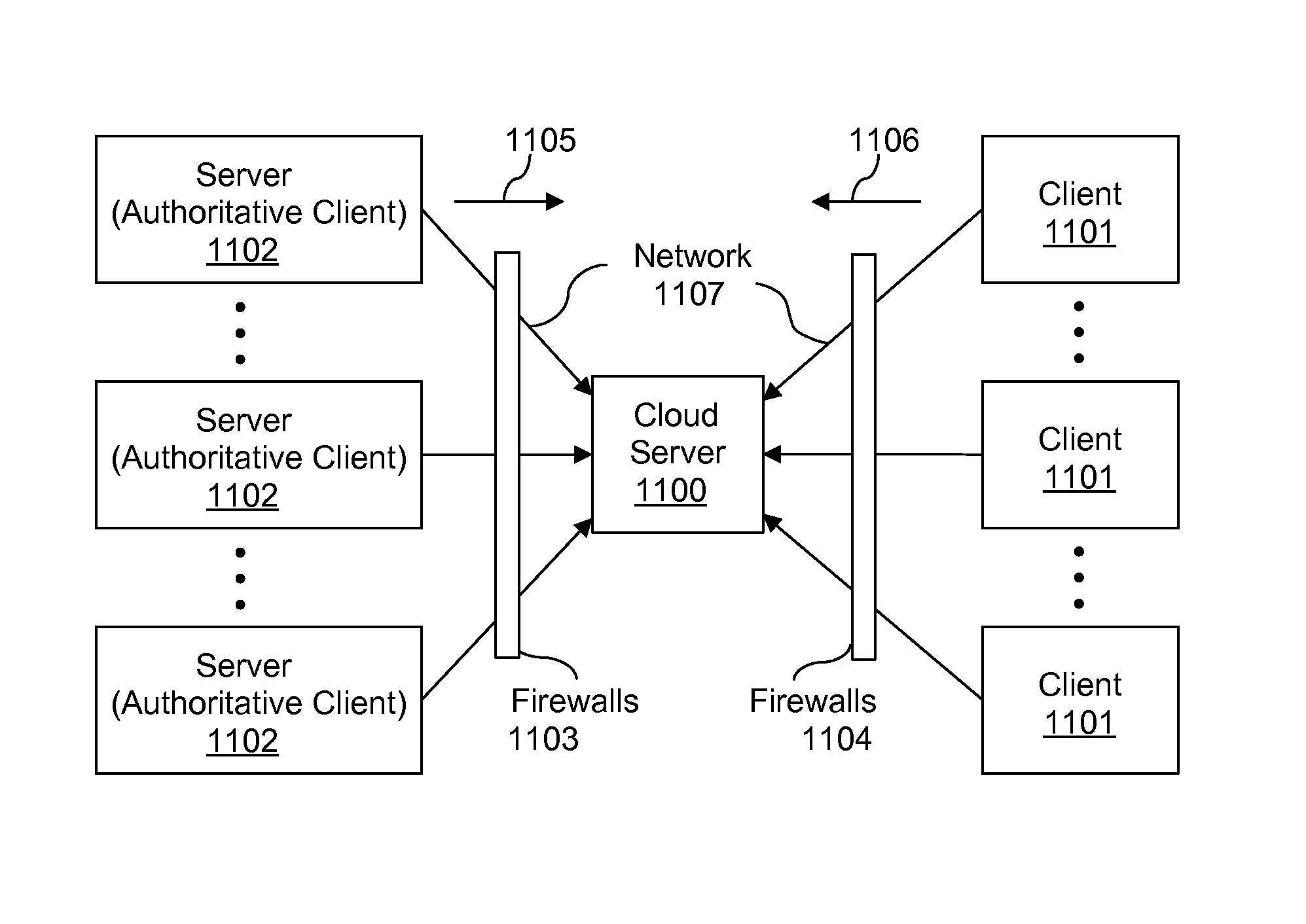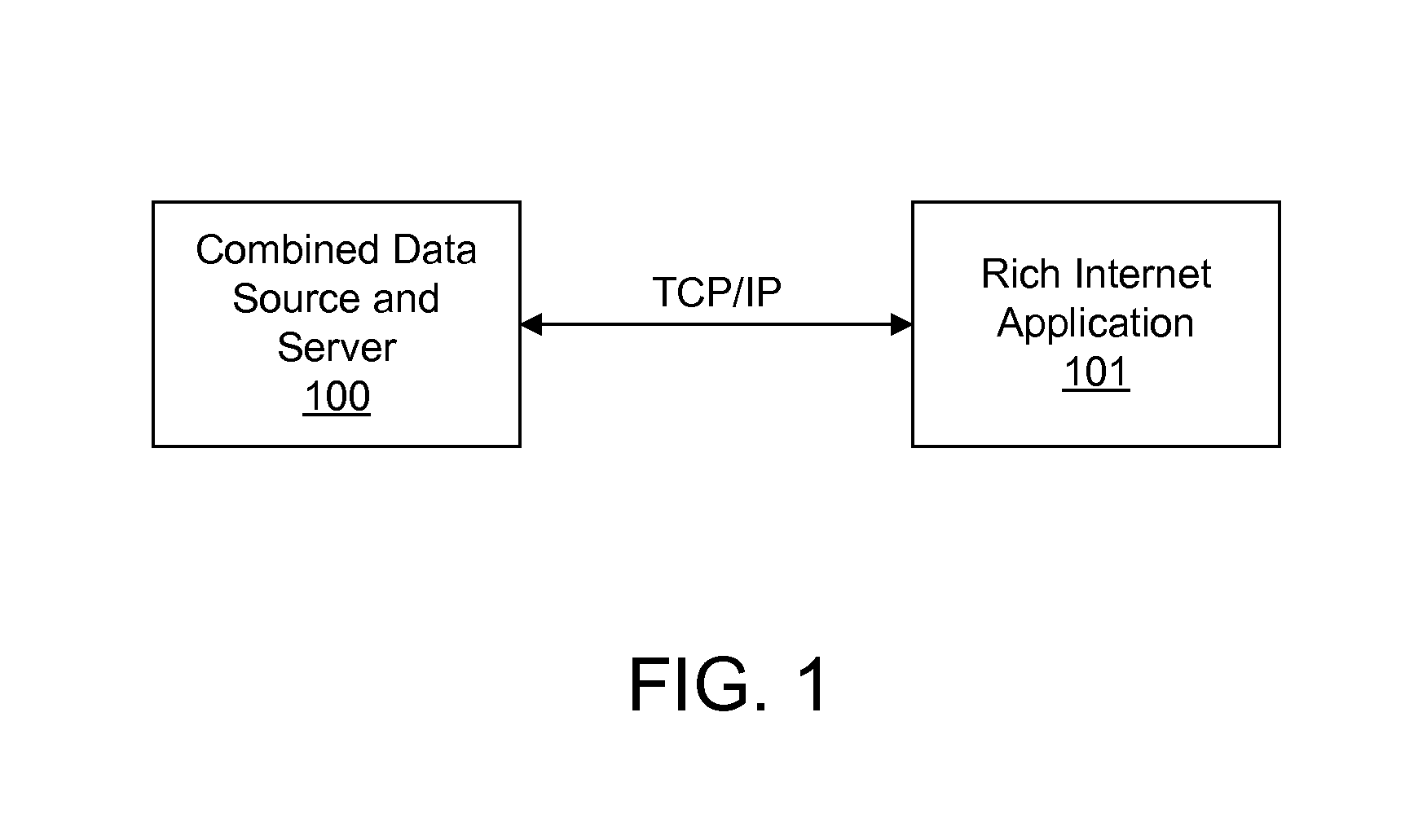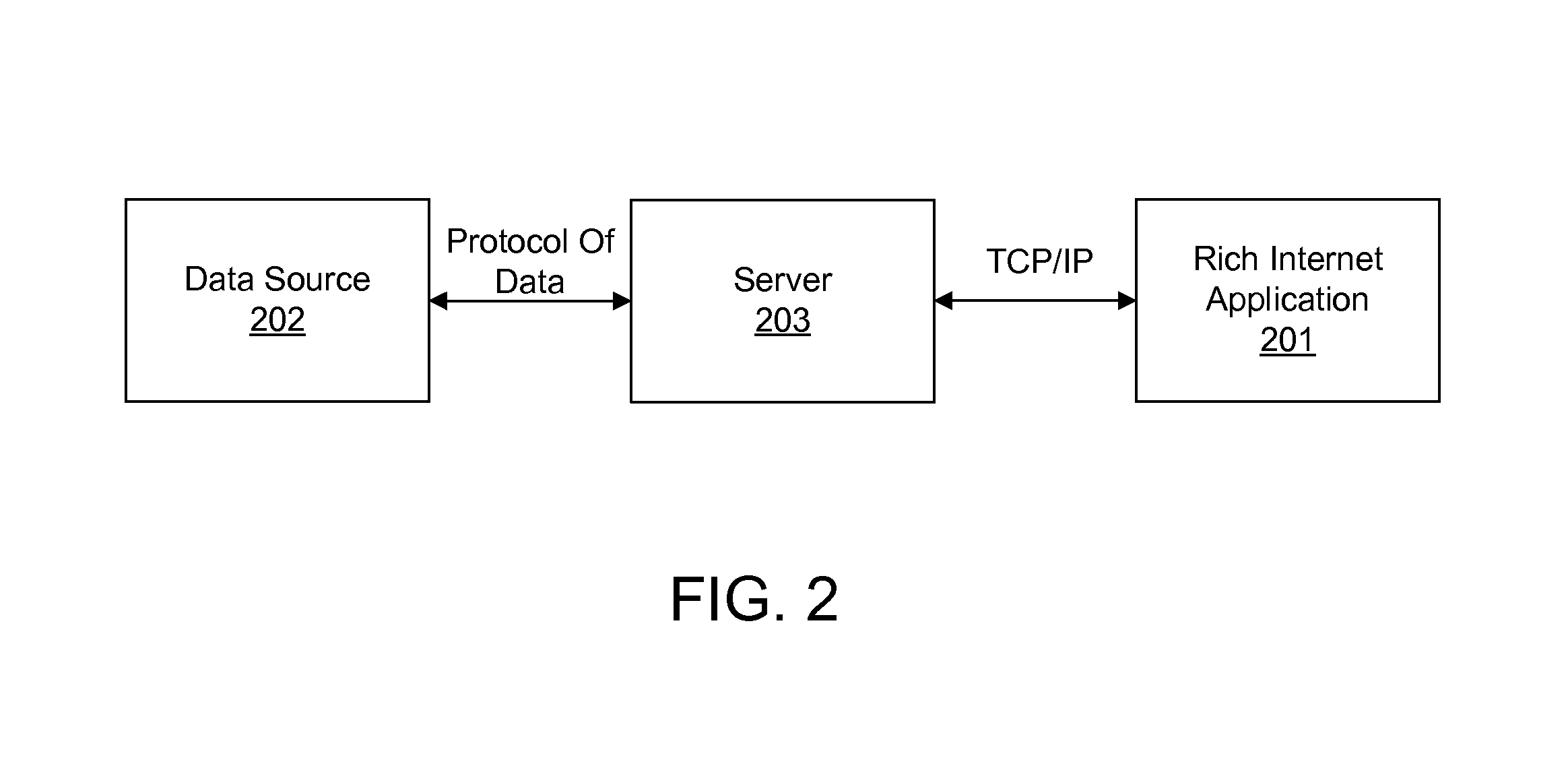System and method for secure real-time cloud services
a real-time cloud and cloud service technology, applied in the field of secure real-time cloud services, can solve the problems of inability to directly connect a web browser that supports the http protocol to a spreadsheet application that supports the dde protocol, inability to support all data protocols for all data sources and data sinks, and inability to achieve data connectivity and graphical speed. the effect of speed
- Summary
- Abstract
- Description
- Claims
- Application Information
AI Technical Summary
Benefits of technology
Problems solved by technology
Method used
Image
Examples
Embodiment Construction
[0071]The following description is presented to enable any person skilled in the art to make and use the invention, and is provided in the context of particular applications of the invention. Various modifications to the disclosed embodiments will be readily apparent to those skilled in the art, and the general principles defined herein may be applied to other embodiments and applications without departing from the scope of the present invention. Reference to various embodiments and examples does not limit the scope of the invention, which is limited only by the scope of the claims attached hereto. Additionally, any examples set forth in this specification are not intended to be limiting and merely set forth some of the many possible embodiments for the claimed invention.
[0072]The program environment in which a present embodiment of the invention is executed illustratively incorporates a general-purpose computer or a special purpose device such as a hand-held computer, telephone or ...
PUM
 Login to View More
Login to View More Abstract
Description
Claims
Application Information
 Login to View More
Login to View More - R&D
- Intellectual Property
- Life Sciences
- Materials
- Tech Scout
- Unparalleled Data Quality
- Higher Quality Content
- 60% Fewer Hallucinations
Browse by: Latest US Patents, China's latest patents, Technical Efficacy Thesaurus, Application Domain, Technology Topic, Popular Technical Reports.
© 2025 PatSnap. All rights reserved.Legal|Privacy policy|Modern Slavery Act Transparency Statement|Sitemap|About US| Contact US: help@patsnap.com



